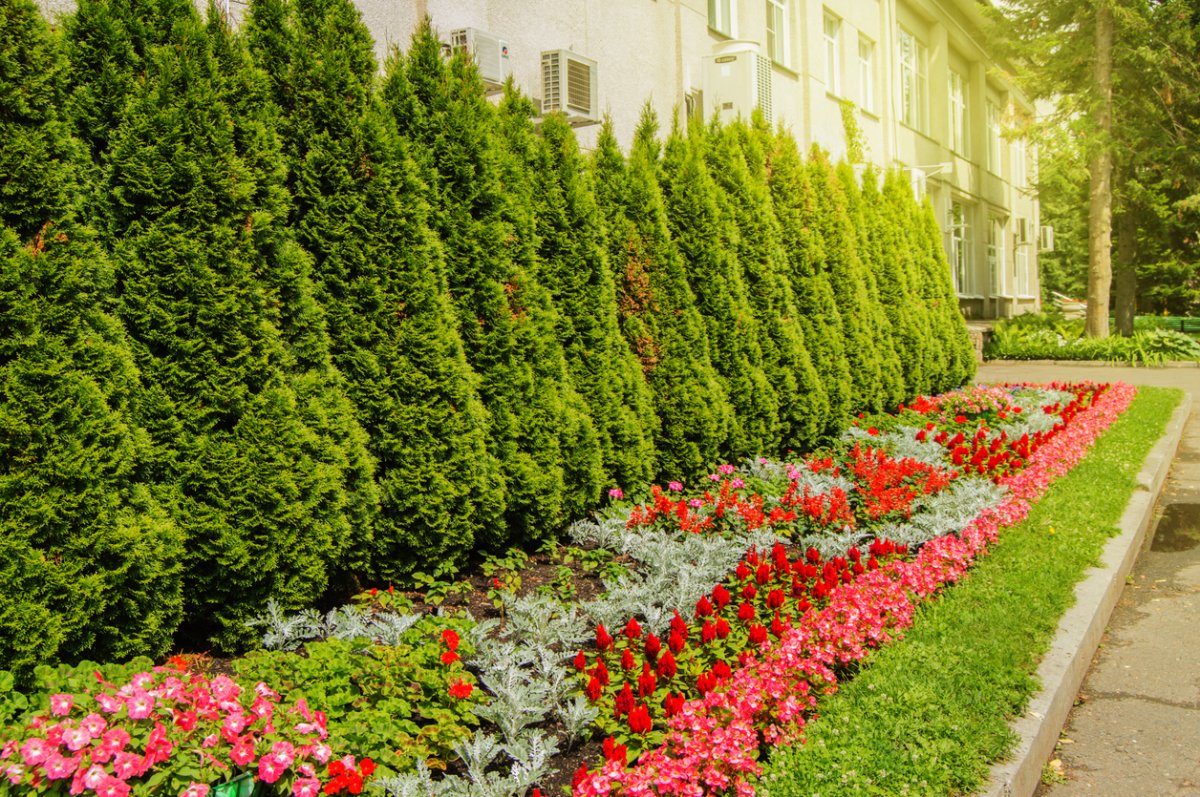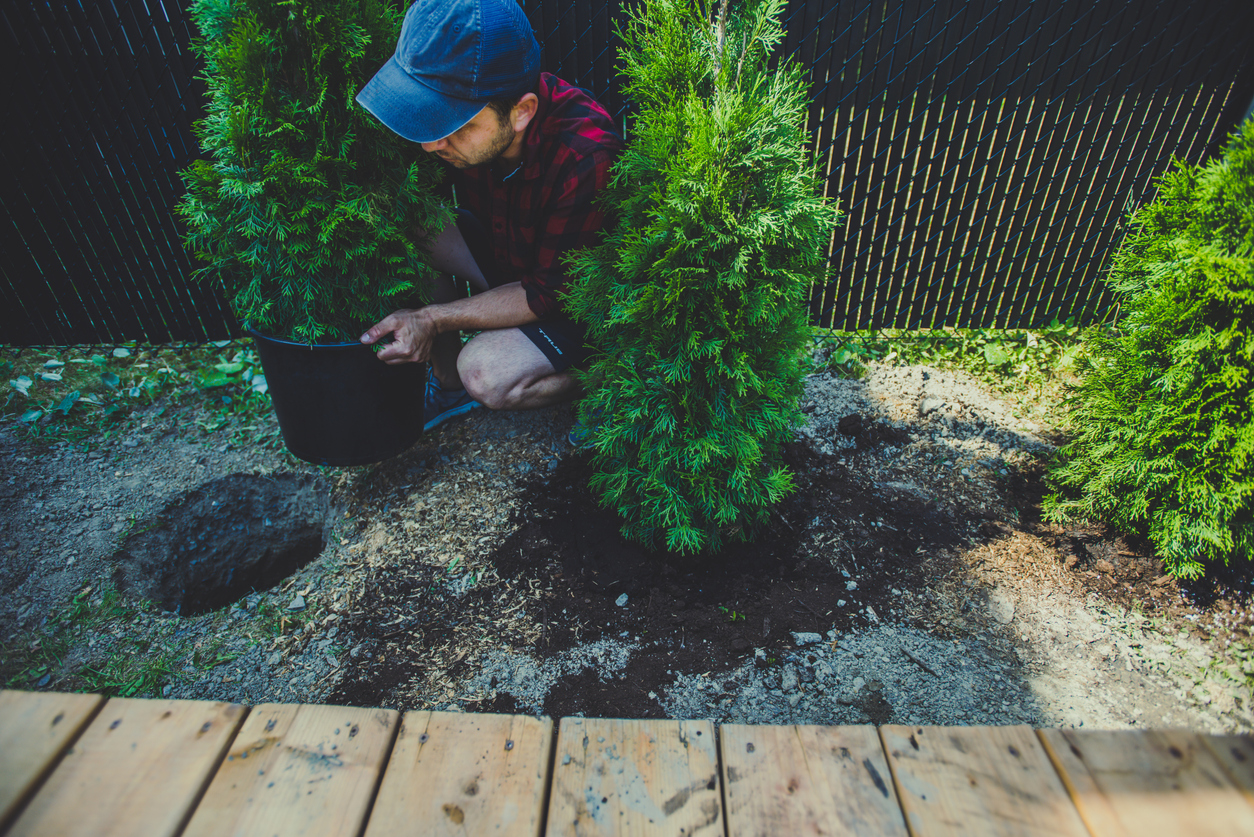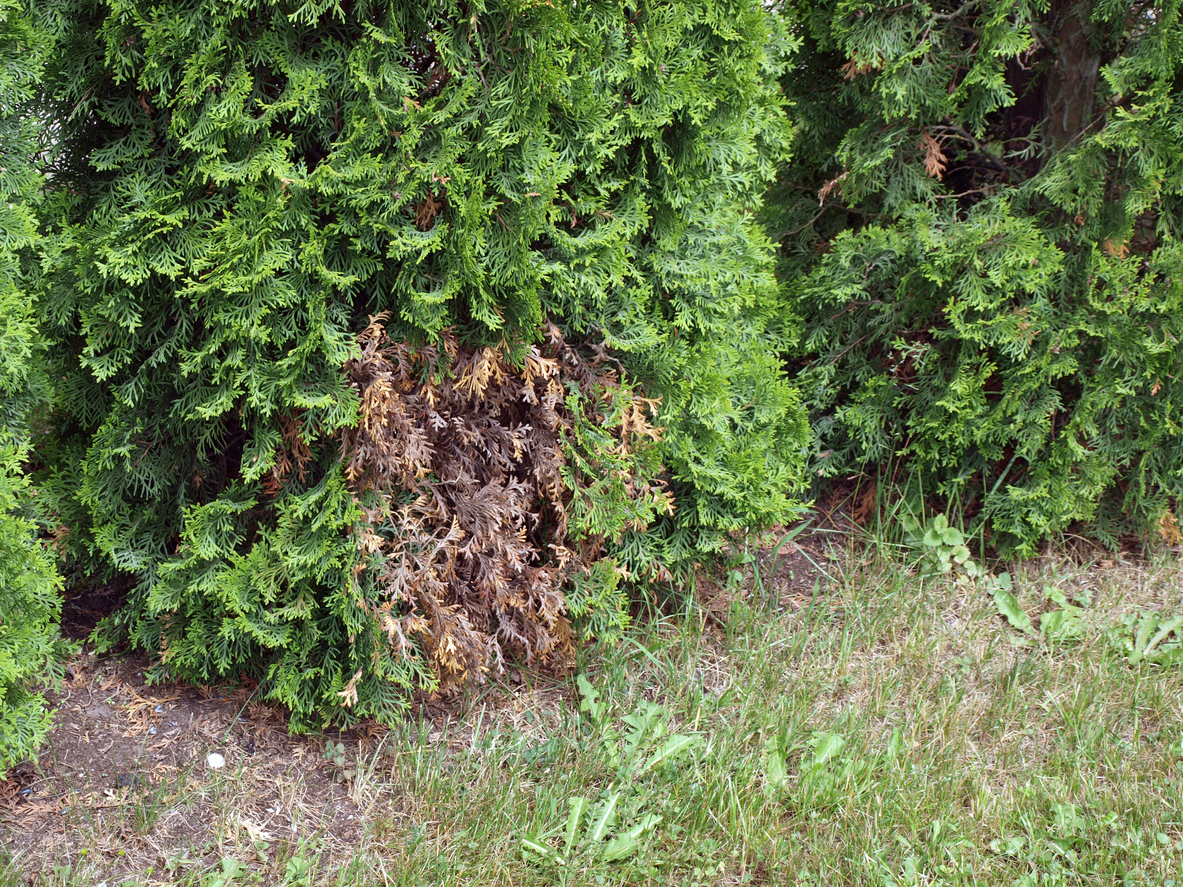

We may earn revenue from the products available on this page and participate in affiliate programs. Learn More ›
Q: What can I do about my arborvitae turning brown? Is that caused by the water, the weather, or some weird disease?
An arborvitae tree turning brown appears to be a contradiction in terms, since its name means “tree of life.” However, it sometimes can look like death not so well warmed over.
If what was supposed to be a slender and stately evergreen isn’t so green anymore, you’ll want to consider some of the most common reasons for the color change. Whether your tree is American arborvitae, Green Giant arborvitae, American Pillar arborvitae, or the aforementioned arborvitae Emerald Green, the reasons for the drabber hue usually come under one of four headings: transplant shock, drought (or perhaps over-watering), winter burn, or fungal disease.
Related: Solved! Which Evergreens Grow the Fastest
Newly transplanted arborvitae could be experiencing shock.
If your arborvitae trees are freshly planted and yellowing, and browning or wilting at the tips, the most likely cause is transplant shock. Because these evergreens often lose many of their roots when dug up at the nursery, they will need time to put down more and probably will continue to look somewhat unhappy until they do. So you’ll want to stress them out as little as possible during the transition period.
For the best results, plant your arborvitae in spring or early autumn, carefully spreading out the roots rather than breaking them apart. Set the plants high, so that the tops of their root balls are just at the surface of the soil, and water them well and regularly for at least the first 6 months after planting them. Don’t add any amendments to their backfill and refrain from fertilizing them until they have been in the ground for a year.

Drought can cause arborvitae to turn brown.
Not the best plant for climates prone to drought, an arborvitae tree can die if allowed to dry out completely for only one day. So make sure that yours receives the equivalent of at least 1 inch of water per week via rainfall or an irrigation system. If that isn’t happening, you’ll want to give each shrub at least 10 gallons of water once every 5 days until rainfall recommences.
If you do not have an irrigation system, you can apply water via a water bag made especially for trees and shrubs or use two 5-gallon buckets with a tiny hole drilled in the base of each. If you set those buckets on either side of your arborvitae, the water should drain out slowly enough to wet the soil without running off. Keep in mind, though, that over-watering can cause root rot, which also could result in browning foliage—especially if you planted the tree too deep.
Related: The 15 Best Trees and Shrubs to Grow for Backyard Privacy
Arborvitae turning brown could be a sign of winter burn.
An evergreen shrub’s color will often be “bronze” in winter due to lower levels of chlorophyll. If the browning foliage on your arborvitae doesn’t appear to be drying out, it may still take on a tan colored hue which will reverse itself in spring when chlorophyll production ramps up again.
However, if that foliage seems to be shriveling, the problem is probably a burn instead. That can result from a variety of issues, including extreme cold or too much sun, either of which can dry out the visible part of the plant while its roots still are too frozen to replace the moisture lost.
To prevent such desiccation, water your shrubs in late autumn before freezing temperatures set in, mulching them with about 3 inches of shredded bark. You also can protect them over winter with a burlap screen, which surrounds them on all sides, or with a burlap wrap.

Check for additional signs of fungal disease.
Pestalotiopsis, a twig blight, might pay your arborvitaes a visit—usually in spring after they have been stressed out by harsh winter conditions. It often appears near the base of each plant where the growth is the thickest. You can identify it by the tiny black “pimples” that appear on the affected twigs, and by the fact that those twigs will turn dark brown.
Wait for a dry day to prune out the affected foliage and avoid any irrigation methods that spray water all over the trees, spreading the spores. (Copper fungicides are recommended only for arborvitae trees that are particularly vulnerable, such as those still suffering from transplant shock.) When pruning, be careful not to cut the branches back by more than one third—and be especially careful not to cut them back to bare wood, since that wood will not sprout again.
